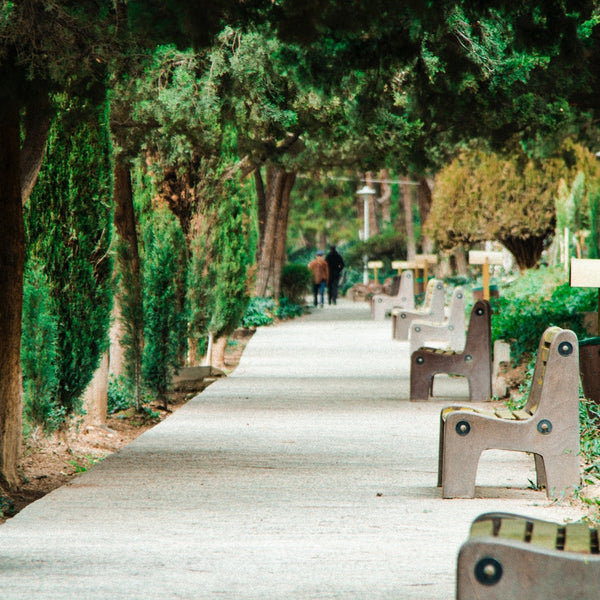Yoga Demystified. Which Type of Yoga is Right for You? (A Breakdown of Different Styles)

There’s nothing superficial about the “poses” done in Yoga class. It’s true, many initially gravitate to Yoga because of its far-reaching health benefits. But I’m convinced what keeps so many of us grounded in the ancient practice, is the sense of connection and inner balance it offers. Rooted in India, with eight limbs, only one branch, “Asana,” involves physical movement; however, when we talk about Yoga class that’s usually what we’re referring to.
In the short time since arriving in the West, what we call “Yoga” has grown and morphed like a shapeshifter, taking on countless incarnations, in some cases, unrecognizable from its spiritual beginnings. Today we can do Downward Facing Dog with cute little goats, a Karaoke band, or flying on a trapeze. No matter how unconventional some styles may be, I still believe all energy directed toward Yoga is positive.
As a Hatha teacher, trained in the Integral Yoga tradition, I wholeheartedly believe Yoga is for every body. Although, when it comes to different styles, depending on your personality, needs, and experience level, certain types will feel more natural than others. Whether you’re new to Yoga and wondering how to get started, or a seasoned Yogi/Yogini, finding the style that resonates with your life, can seem overwhelming.
Here’s a breakdown of Yoga styles to help simplify the path.
Hatha

Would you like to relax and meditate? If speed and sweat aren’t requirements, and you’re craving a purist approach, Hatha is a beautiful option. It’s also ideal if you’re new to Yoga and want foundational training before experimenting with styles; the practice will give you a chance to become familiar with each pose, how it relates to anatomy, and its accompanying health benefits. Often slower paced, traditional asanas are linked with breathwork (Pranayama), meditation, and possibly chanting. Not as easy as it appears, classes vary; often there will be Yoga Nidra, (the Yogic Sleep) at the close of class, allowing the body to fully unwind. Because pacing is more languid than other styles, Hatha gives you the time and space to go within and sink deeper into a pose, while also enhancing awareness.
Ashtanga (AKA Power Yoga)

Are you driven to push beyond your limits? If so, you may find your groove in this highly focused style. Created by Sri K. Pattabhi Jois and T. Krishnamacharya, Ashtanga is rewarding for those dedicated to the practice. Done in quiet, without modifications, the asanas in each series are the same, performed in repetition. It’s recommended to practice, multiple times per week. Be mindful: this deeply challenging style, isn’t for those seeking a low key approach. Although, if you don’t believe in comfort zones, and thrive on intensity, with Ashtanga you can build strength, along with mental and physical endurance.
Vinyasa

If going slow makes you antsy and you want to work up a sweat, Vinyasa will get your energy moving. The type of Yoga most taught in gyms, Vinyasa may feel more like exercise since it gives you an amazing cardio workout. Depending on the teacher, a class might have breathwork and meditation, or be strictly fast-paced. Vinyasa may call upon intense physical strength, but it also may not. When choosing a class, it’s a good idea to find out more about a particular studio or gym’s individual approach. Some questions to ask: will there be meditation? How challenging are classes? Is it suitable for beginners? Do classes include Yoga Nidra? Will there be breathwork?
* Some believe Ashtanga feels similar to Vinyasa, but each style is distinctly different. While many asanas may be the same, with Ashtanga, there’s a specific order to each series, and classes are focused on each asana. A Vinyasa class is not necessarily ordered. There’s lots of wiggle room… It can be loosely structured in various ways, and held with or without music. And because poses are linked with the breath in a continuous flow, Vinyasa class usually moves faster.
Kundalini

Do you enjoy mantras and the metaphysical side of life? Linked to chakras, or energy centers, in the body, this highly spiritual yet controlled practice has myriad benefits. There’s a sense of the theatrical to Kundalini too. Instructors often wear lovely white cascading clothing and turbans. The range of classes can be extremely varied; for instance, in the gym or a studio that also teaches other styles, Kundalini may be flowing, set to music, with some chanting, attention to breath, and poses held for shorter periods to make it more accessible. Whereas a class taken in a Kundalini studio, may be more methodical… Pacing can be significantly slower, with asanas held for extended periods, repetitive mantra chanting, blended with specific breathing exercises. Kundalini practice can help access creativity, strengthen focus, and achieve energy balance.
Bikram, and Hot Yoga

Bikram was founded by Bikram Choudhury, and is a system rooted in basic Hatha. The 90 minute series of 26 asanas, includes breathwork. The room is 105 degrees and humid. FYI: depending on the studio you go to, what is called “hot Yoga,” might be traditional Bikram, or else an entirely different kind of hybrid, taught in a heated room 80-105 degrees. So if you are thinking of taking Bikram, or another brand of “hot Yoga,” do your homework first. Investigate how the asana portion of class is taught in that particular studio. And always practice safely, especially if you have health concerns. Stay fully hydrated and listen to your body. The high temperature can cause heart rates to accelerate and electrolytes to become depleted. On very rare occasions fainting has occurred in classes. Reasons behind the toasty atmosphere? Extreme heat builds discipline, as it works to warm and loosen up the muscles, and simultaneously release toxins from the body.
Iyengar

If you’d like to learn more about the structure of the human body you may gravitate to this intelligent, pragmatic approach to Yoga. Nothing about Iyengar is a quick fix. Instead, the style works gradually to create lasting results. Founded by B.K.S Iyengar (Light On Yoga 1966), asanas are held for extended periods, with in depth attention given to alignment and anatomy, along with breathing techniques. Iyengar differs from other Yoga styles that require 200 or 500 hours of training; in order to become certified to teach Iyengar, instructors must go through years of extensive training to earn their seasoned credentials. In class, instructors will perform strategic adjustments with basic props. Iyengar doesn’t feel like a gym workout, it’s more like a Yoga therapy session. Deceptively powerful, if approached with dedication, the style can bring you greater physical awareness as well as emotional flexibility.
While you try out different styles, remember that an essential part of Yoga is kindness. So release judgement and attachment to the outcome. Allow yourself to enjoy each new experience with a beginners’ mind. Be curious… Embrace a playful sense of wonder, one asana at a time.



